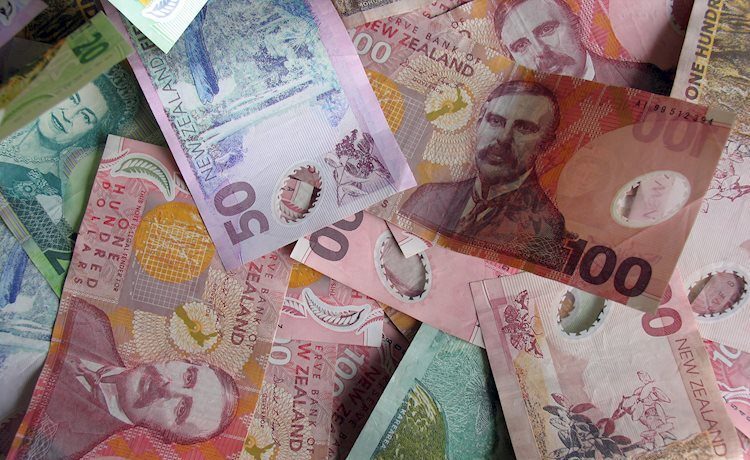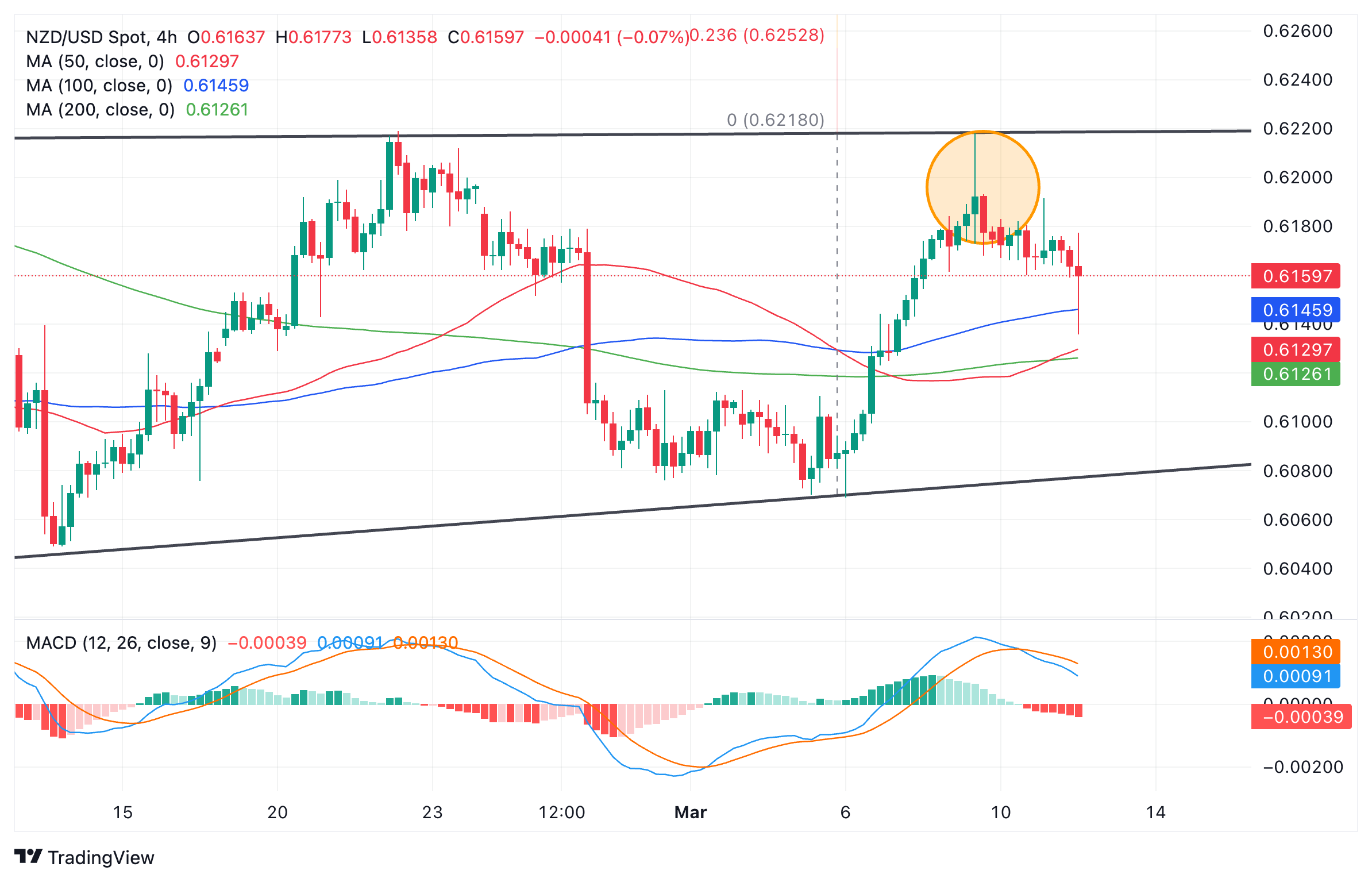- New Zealand Dollar weakens against the US Dollar following the latest US inflation figures for February.
- They paint a picture of stubbornly hot inflation, which could make the Fed keep interest rates elevated to cool.
- The NZD/USD pair is falling back down towards its range lows in the 0.6080s.
The New Zealand Dollar trades lower against the US Dollar on Tuesday in the wake of US Consumer Price Index (CPI) data for February, which shows inflationary pressures in the American economy remain stubbornly high.
The data suggests the Federal Reserve (Fed) may have to keep interest rates higher for longer to cool the economy. Relatively higher interest rates for longer is a positive driver for the US Dollar as it attracts more foreign capital inflows.
The fact that Gasoline and Energy prices were two of the biggest contributors to elevated inflation, however, will probably limit US Dollar upside since these are seen as less entrenched pressures and subject to global commodity price fluctuations.
New Zealand Dollar declines vs US Dollar after US CPI beat
The New Zealand Dollar takes another step lower against the US Dollar on Tuesday after both headline and core US CPI for February came out above estimates, according to data from Bureau of Labor Statistics (BLS).
The US Consumer Price Index ex Food and Energy (core) inflation came out at 3.8% YoY when analysts had expected a 3.7% result. The figure was lower than the 3.9% recorded in January, however, suggesting inflation is coming down, only not as quickly as forecast.
On a monthly basis, core CPI rose 0.4%, which was higher than the 0.3% forecast and equal to the 0.4% recorded in January.
The broader headline CPI figure showed an unexpected rise of 3.2% YoY against the 3.1% forecast. This was also higher than the 3.1% recorded in January.
On a monthly basis headline CPI rose 0.4%, which was in line with estimates and higher than the 0.3% registered in January.
According to the CME FedWatch Tool, which calculates a market-based expectation of when the Federal Reserve will begin reducing its Fed Funds Rate, the probability of a first rate cut in March has fallen to 1% from 3% prior to the CPI release. The chance of one or more 25 bps cuts by May is now 16.8% from 17.1% prior to the CPI release. The probability of one or more interest rate cuts by June is now 69.7% from 71.4% prior to the data.
Technical Analysis: New Zealand Dollar continues falling inside range
The NZD/USD pair continues falling after touching the top of its range in the 0.6220s on Friday, where it formed a bearish Shooting Star Japanese candlestick pattern on the 4-hour chart (circled).
New Zealand Dollar vs US Dollar: 4-hour chart
The combination of the Shooting Star, the range high and the downside move since suggest the short-term trend has changed, and the pair is descending within its range, back down towards the range lows at around 0.6080-90.
The move down was also accompanied by the Moving Average Convergence/ Divergence (MACD) indicator crossing below its signal line whilst in positive territory, adding credence to the bearish outlook.
Only a breakout above the range high and the high of the Shooting Star would suggest the market was going higher. Such a move would probably reach a target at 0.6309, the 61.8% Fibonacci extrapolation of the height of the range from the breakout point higher.
New Zealand Dollar FAQs
The New Zealand Dollar (NZD), also known as the Kiwi, is a well-known traded currency among investors. Its value is broadly determined by the health of the New Zealand economy and the country’s central bank policy. Still, there are some unique particularities that also can make NZD move. The performance of the Chinese economy tends to move the Kiwi because China is New Zealand’s biggest trading partner. Bad news for the Chinese economy likely means less New Zealand exports to the country, hitting the economy and thus its currency. Another factor moving NZD is dairy prices as the dairy industry is New Zealand’s main export. High dairy prices boost export income, contributing positively to the economy and thus to the NZD.
The Reserve Bank of New Zealand (RBNZ) aims to achieve and maintain an inflation rate between 1% and 3% over the medium term, with a focus to keep it near the 2% mid-point. To this end, the bank sets an appropriate level of interest rates. When inflation is too high, the RBNZ will increase interest rates to cool the economy, but the move will also make bond yields higher, increasing investors’ appeal to invest in the country and thus boosting NZD. On the contrary, lower interest rates tend to weaken NZD. The so-called rate differential, or how rates in New Zealand are or are expected to be compared to the ones set by the US Federal Reserve, can also play a key role in moving the NZD/USD pair.
Macroeconomic data releases in New Zealand are key to assess the state of the economy and can impact the New Zealand Dollar’s (NZD) valuation. A strong economy, based on high economic growth, low unemployment and high confidence is good for NZD. High economic growth attracts foreign investment and may encourage the Reserve Bank of New Zealand to increase interest rates, if this economic strength comes together with elevated inflation. Conversely, if economic data is weak, NZD is likely to depreciate.
The New Zealand Dollar (NZD) tends to strengthen during risk-on periods, or when investors perceive that broader market risks are low and are optimistic about growth. This tends to lead to a more favorable outlook for commodities and so-called ‘commodity currencies’ such as the Kiwi. Conversely, NZD tends to weaken at times of market turbulence or economic uncertainty as investors tend to sell higher-risk assets and flee to the more-stable safe havens.















